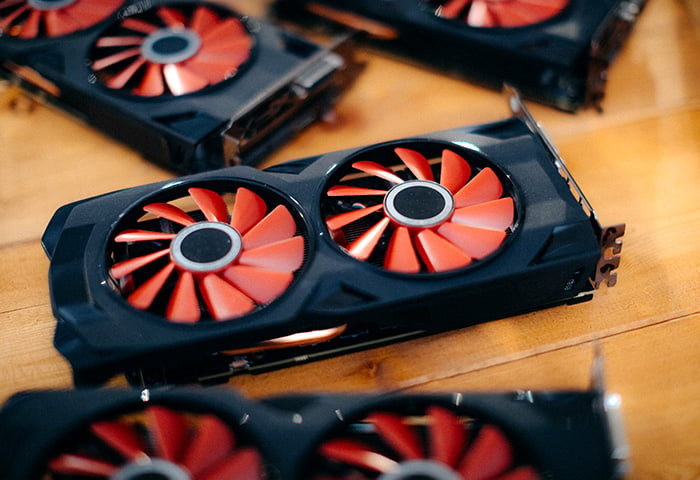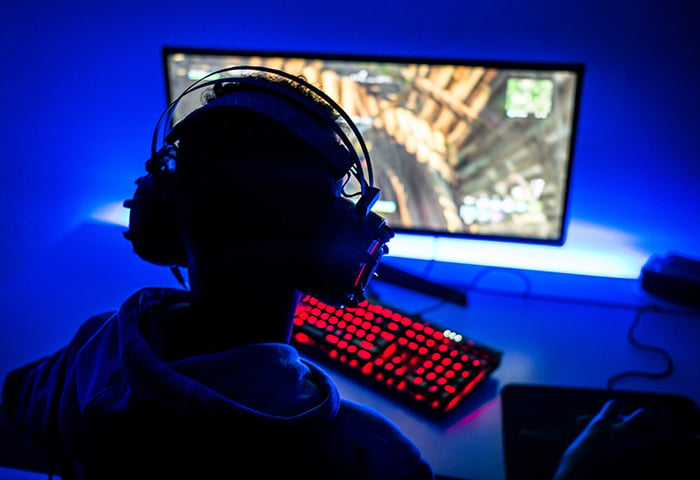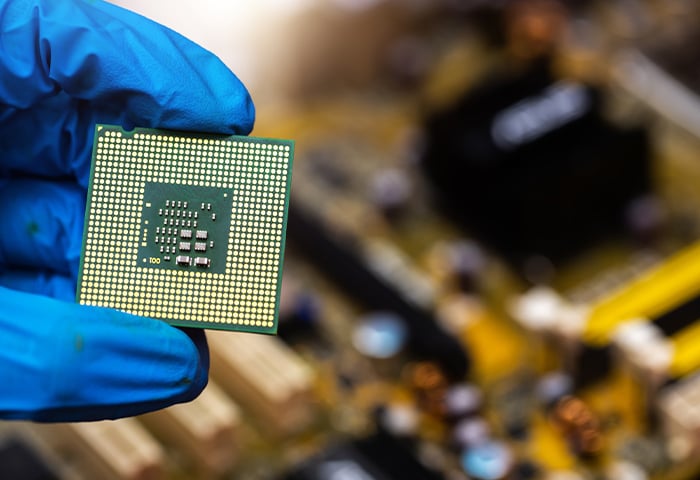Yet this has been a welcome change from today’s onslaught of casual gaming. To boost sales, PC and console games are often designed so that ”everyone” can jump in quickly, obtain instant gratification, and encounter little frustration. Not Dark Souls. Players must figure how the game works by themselves. Yet the game has enjoyed massive commercial and critical success.
Dark Souls 3 is no exception. While the controls and speed have improved drastically, it’s still a challenging game. Unfortunately, it’s also a console port, and thus has problems with graphical fidelity and performance. This is where this blog comes in.
The following guide should help you boost Dark Souls 3 graphics beyond the game's limits (if your PC can handle it). It should also help make the game run a bit smoother, which is particularly helpful if you don’t rock the latest hardware.
For this guide, we tested Dark Souls 3 on a Microsoft Surface Book Pro as well as a beefed up Alienware Area 51 R2 that sports dual 980 TIs (NVIDIA’s top-of-the-line graphics) working in tandem. As of the writing of this article, it doesn’t get much faster than this, and is currently the only configuration that allows modern games to be played at 60 frames per second (FPS) in 4K resolution. While the (far) less powerful Surface Book needed some tweaking to achieve a smooth framerate, the Alienware was configured to showcase game beauty in 4K resolution with absolutely maxed out graphics
-
Intel Core i5 6300U 2.5 GHz (Skylake), 2 physical cores, at 3 GHz (boost)
-
8 GB RAM
-
NVIDIA GeForce Mobile (rebranded 940M)

-
Intel Core i5 5820k (Broadwell), 6 physical cores at 4.4 GHz (overclocked)
-
32 GB RAM
-
2 Gigabyte Windforce 980 TI at 1450 MHz (roughly 30% overclocked)

Can your PC even run Dark Souls 3?
While Dark Souls 3 is not as graphically impressive as Witcher 3 or other blockbuster titles like the latest Call of Duty, it’s still a hardware killer.
Minimum Specs:
OS: Windows 7/8/10 (64-Bit)
Processor: Intel Core i5-2500 3.3 GHZ or AMD FX-6300 3.5GHz
Memory: 8GB
Video Card: NVIDIA GeForce GTX 750 Ti / ATI Radeon HD 6870
Recommended Specs:
OS: 10 (64-Bit)
Processor: Intel Core i7 2600 3.4 GHz / AMD FX-8340 4.0 GHz
Memory: 8 GB
Video Card: NVIDIA GeForce 970 GTX or equivalent
But no matter whether you have a lower-end or a higher-end gaming PC, I’ll show you how to get the best quality and a much smoother framerate out of the game.
Oddly enough, Dark Souls 3 had problems detecting the best settings on both of my machines. On the Surface Book, it rendered at Full HD (1920x1080) with high details–clearly too much for the ultraportable laptop/tablet hybrid which only managed to crank out a stutteringly slow 10fps. Unplayable. On the other end of the spectrum, Dark Souls 3 set the resolution for my high-end gaming rig to 1080p, despite it having the horsepower to display buttery smooth gameplay at 4096x2160 (4k resolution).

Tip 1 – Performance 101: optimize your PC and laptop performance
Before we start optimizing for Dark Souls 3, take a moment to take the 9 essential steps to boosting your PC or laptop speed (tips I published a while ago). This covers the basics of getting your machine in top shape. The most important are:
-
Upgrade your graphics drivers and even use beta drivers.
-
Overclock your graphics card (safely!).
-
Use our AVG TuneUp to turn off performance-sapping background activity.
-
Defrag your hard disk.
Because Dark Souls 3 still has some performance issues, your PC or laptop should be tweaked to its absolute performance limit before you jump into game-specific settings.
Tip 2 – Get the NVIDIA & AMD Dark Souls 3 drivers
As usual, both NVIDIA and AMD have prepared a special driver that’s optimized for Dark Souls 3 and enables dual GPUs (SLI, if your rig sports it) for the best possible performance.
-
AMD users click here to download the latest drivers. As of the writing of this article on April 23rd, version 16.15.21211 is available. The more daring among you might want to try the Hotfix version by clicking on the Latest Windows Hotfix Driver on the right hand-side.
-
NVIDIA users click here to grab the latest drivers from the official page. Version 364.72 has been optimized for Dark Souls 3, so anything newer should be fine.

-
Intel Iris: Owners of the mobile or desktop Intel HD Graphics chip, can go to this forum (and pick the most recent entry at the top) to find the latest drivers for optimal performance. You can also visit the official Intel site (be aware that Intel sometimes doesn’t yet offer the latest beta drivers that help improve gameplay). However, new drivers or old, don’t expect Dark Souls 3 to run great on integrated hardware – I can’t make any promises here.
One thing to note: Some laptops sport two graphics processors: an Intel HD Graphics GPU for more battery life on the road, and a discrete GeForce GPU or AMD GPU for multimedia and gaming tasks. Usually Windows does this automatically, but you should make sure that your device is using the more powerful GPU. To do that, right-click on your desktop and go to your graphics control panel, such as the NVIDIA Control Panel. Switch to Manage 3D Settings and make sure that the preferred graphics processor is set to NVIDIA High Performance Processor.
Tip 3 – Tweak Dark Souls 3 basic settings
The in-game graphics settings clearly show that Dark Souls 3 is a console port. There aren’t too many settings you can tweak:


On our gaming PC, the absolute highest settings run smooth at 4096x2160 (4K resolution). If your rig is powerful, but not quite 4K capable, try reducing the Shadow quality to Medium, as this is one of the most resource intensive effects. The change should result in little to no visual differences, as shown below:
 Shadow at Maximum - game runs at an unplayable 6fps.
Shadow at Maximum - game runs at an unplayable 6fps.

Shadow quality at Medium — game runs at 35fps. If you look closely (open the pictures in full screen), you might see a slight difference in the shadows on the house or the grass. But to be honest, I don't think either one looks better or worse — they're just different.
There were some settings that had no or very little impact when changed from Max/High to Low/Off. These include Reflection quality, Shader quality, Effects quality, SSAO, and Water quality. Changing these may squeeze out a few frames, but when compared to the visuals you’ll lose, they’re not worth it. If you really need to improve performance, try turning off Anti-Aliasing and reduce the texture quality. This will give you some loss in quality, but it doesn’t really make the game look like something out of the early 2000s.
Of course the most effective way to optimize performance is to reduce the resolution. While 1080p looked much crisper on my Surface Book, a low double-digit framerate isn’t really playable. So I went down to 1280x720, which literally tripled the framerate.
Tip 4 – For older NVIDIA GPUs: time for a downgrade
Remember what we said about always getting the latest drivers? Forget all that — at least if you’re using an older Nvidia card like one from the 5xx or 6xx series (below the minimum specs). By doing a downgrade, the following YouTuber managed to go from 12-16fps in the start area to over 45fps on a GeForce 560 Ti:
550ti user here, got a up from 10~20 fps 800x600 to a 30~40 fps 1280x720 it might increase even more once i get out of this full of dust map. Thank you so much!
I love you. I was so bummed yesterday when I couldn't keep a framerate above 30 fps even on 800x600 windowed, and now I get >50 fps, low settings and 720p. Thanks. Seriously, thank you.
I just want to say man, you saved me 500 dollars. I was so ... sad last night. I run two 570 GTXs in SLI and I was getting slideshow soup. Now I'm on 1080p with everything on low getting about 35-45 fps.
You check out the original discussion thread here. Our advice: uninstall the drivers using the latest Display Driver Uninstaller and clean install the drivers posted above.
Tip 5 – For absolute low-end laptops & PCs: go low (res)
Rocking a 5+-year-old laptop or PC? Don’t care about how the game looks? There’s a way to select a widescreen resolution that’s below the “officially” sanctioned 800x600 setting, which looks off and very weird on commonly found displays. Here’s how: Hold down the WINDOWS key on your keyboard and press R at the same time. In the “RUN” field, type in %appdata% as seen below:

Double-click on the DarkSoulsIII folder and then open the GraphicsConfig.xml via a right-click and the Open With dialog. Use Windows notepad, it works perfectly fine.

Change Resolution-FullScreenWidth to 816 and Resolution-FullScreenHeight to 510. Save the file and launch the game! It should now run significantly faster and also fill up the screen.
If that doesn’t work, right-click on the file, go to Properties and set it to Read-only so that the game doesn’t change it back to the previous setting.
Note: If you want to go back to the default settings, remove the Read-only setting and use the in-game menu to go back to the standard options.
Tip 6 – Some specific settings for NVIDIA & ATI users
Both NVIDIA and ATI GPUs come with their own individual control panels that sport settings users shouldn’t generally tinker with. However, for Dark Souls 3, changing some of these can actually improve performance. To access these control panels, right-click on your desktop and click on NVIDIA Control Panel or AMD Radeon Settings. Then do the following:
-
NVIDIA Control Panel: Go to Manage 3D Settings. First, change Vertical sync to Adaptive. Next, enable both Triple buffering and Threaded optimization. Last but not least, change the Maximum Pre-rendered frames to 1. Repeat this for Virtual Reality pre-rendered frames.

-
ATI/AMD Radeon Crimson: Fire up the AMD Radeon Settings app and go to Global Settings. Under Tessellation Mode, switch from AMD optimized to 8x or 16x to boost performance. Then to set the Texture Filtering Quality to Performance. Both settings have minimum impact on visual fidelity while eliminating annoying stuttering.

Tip 7 – Fix frame drops or stuttering on Windows 10 and Xbox controllers
Oh boy how I’ve suffered from this. Not just in Dark Souls 1 and 3, but also in some other games like Witcher 3. After a few minutes of gameplay, the game starts to stutter whenever I use the analog sticks on my Xbox 360, One, or Elite controllers.
Luckily, I’ve found a solution.
First of all, this is caused by an updated driver in the more recent versions of Windows 10 (insider builds and the Anniversary Edition). To deal with it:
-
Open up device manager by right-clicking on your Start menu icon and clicking on Device Manager.

-
Go to Xbox Peripherals and double-click on Xbox Controller. Go to Update driver software, click on Browse computerfor driver software, then go to Let me select from a list of device drivers on my computer. Go back to the 2.1.0.1349 driver.

Tip 8 – Make it look beautiful: Cinematic FX
By default, Dark Souls 3 may look a bit washed out. Luckily there are third party filters that enhance the sharpness, contrast, and visual effects. The particular preset I’d recommend is called Cinematic FX, and can be downloaded from https://www.nexusmods.com/darksouls3/mods/3. (You may need to register, no worries, it’s free.)
Here's the difference it can make:

Left: Default Dark Souls 3 color scheme and effects. Looks a bit washed out, colors are muted.
Right: Enhanced “Cinematic FX” effects.
While some dark areas might become a bit too dark (it all depends on your monitor and your personal preference), overall I feel it’s quite an improvement. To install it, download the ZIP file from the link above and extract it. You’ll find the following files within that folder:
Copy these files to the Dark Souls 3 directory under: C:\Program Files(x86)\Steam\steamapps\common\DARK SOULS III\Game.
That’s it! Launch the game and hit the SCROLL key to toggle it on or off:

Final Thoughts
Combining all of these tweaks should either make Dark Souls 3 look more beautiful or run much smoother. On my gaming rig, even the enhanced visual preset had no effect and kept the framerate at a steady 60fps – your mileage may vary. On the Surface Book, I was able to literally triple the framerate from an unplayable 10 FPS to a reasonable 47 FPS average


























